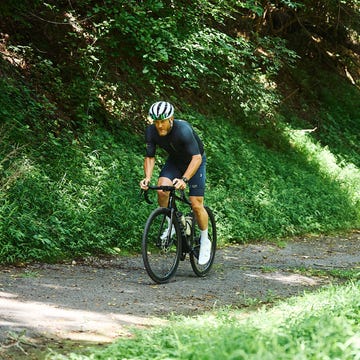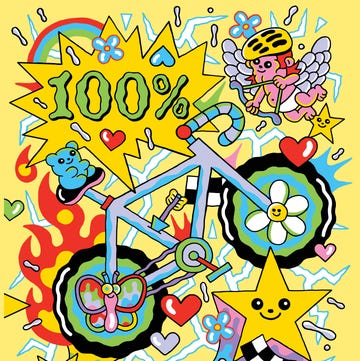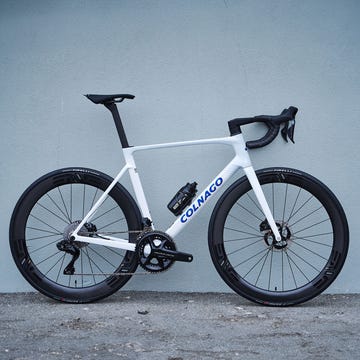After what seems like a geologic epoch, SRAM has an all-new mountain bike brake lineup. The new lineup is significant because it is more streamlined and represents a new direction for the brand.
If you’re shopping for a new mountain bike or any flat-bar bike, you’ll see new SRAM brake names with the latest technologies, including an unprecedented break from its legacy.
The most attention-grabbing news is SRAM’s launching of a new mid-power brake that replaces three brakes in its previous line.
Called Motive (not to be confused with Motiv, a maker of inexpensive e-bikes), this four-piston disc replaces all models of the Level XC- and trail-oriented brake (the Level with both two and four pistons is discontinued) and Code. Before the introduction of the Motive, the Code was SRAM’s most powerful brake and was initially oriented towards downhill racing.
SRAM touts Motive as offering Code power at Level weights. And after testing it on home trails in Durango and over in Moab, I’d say that is a fair description. More on this later.
With some other changes to the brake families—adding a fourth tier of the extreme-duty Maven brake and tweaking the entry-level DB brake line—SRAM has radically reoriented its mountain bike brake lineup. What was an expansive lineup of 27 brake models has been slimmed to 10.
The New SRAM MTB Brake Lineup
• DB8, DB6*, DB4*
• Motive Ultimate*, Motive Silver*, Motive Bronze*
• Maven Ultimate, Maven Silver, Maven Bronze, Maven Base*
*- indicates new
This reorientation also sees SRAM shift the entirety of its mountain bike brakes from DOT fluid to mineral oil. This is a massive change: Since 2004, SRAM's mountain bike brakes have used DOT fluid almost exclusively, the only exceptions being DB8 (2022) and the Maven (2024).
I’ve asked SRAM multiple times and in multiple ways to explain any technical reasons behind this switch, and “Why, after 20-plus years of DOT, switch now?”
I have yet to get what I feel are illuminating answers. The best I’ve received so far was the response I ran in my Maven review: “Each brake option we offer has been designed to use the fluid and seals that will give it maximum performance. Through testing, it was determined that mineral oil offered the best performance (outperforming DOT versions) while also offering desired lower maintenance qualities.”
SRAM also let slip that the mineral-oil-filled DB8 that debuted in 2022 as the brand‘s least expensive hydraulic disc brake has the lowest warranty rate of any SRAM brake.
SRAM joins Shimano, Magura, Formula, and TRP/Tektro in the mineral oil fan club. But, so far, only SRAM’s mountain bike brakes have made this switch. SRAM’s recently launched Red for road and gravel—and, I assume, the evolutions to Force, Rival, and Apex that are sure to follow—continue with DOT.
At the very least, mineral oil is less gnarly than DOT. Mineral oil also will not absorb water and degrade over time like DOT, so annual flushes are a thing of the past.
But mineral oil is not standardized like DOT, so you can’t use any mineral oil in SRAM’s new brakes the way you could use any DOT 5.1 in their old brakes. Use the wrong mineral oil, and bad things could happen, so it’s best to stick with the Maxima Mineral Brake Oil the brakes get from the factory.
The Motive debuts in three levels: Ultimate, Silver, and Bronze. Although it is an all-new brake, it carries many familial features from SRAM’s other disc brakes.
The Motive Line
Motive Ultimate Expert Kit $599
• Offered in limited numbers. Kit includes Ultimate brake set (see below for specs) with teal highlights, two rotor mounting brackets, two 180mm CL-X rotors, two 160mm CL-X rotors, rotor bolts, rotor carrying case, Pro Mineral Bleed kit, four barbs and four olives, two pairs of steel-back metal sintered pads.
Motive Ultimate $275 (per wheel, rotor not included)
• Claimed weight: 264 grams (per wheel)
• Carbon fiber brake lever
• Titanium hardware
• Bearing lever pivot
Motive Silver $225 (per wheel, rotor not included)
• Claimed weight: 273 grams (per wheel)
• Aluminum brake lever
• Stainless steel hardware
• Bearing lever pivot
Motive Bronze $175 (per wheel, rotor not included)
• Claimed weight: 279 grams (per wheel)
• Aluminum brake lever
• Steel hardware
• Bushing lever pivot
It uses the same pads as the Code, and the hoses, hose barbs, and olives carry over from the DOT brakes. You’ll find SRAM’s Match Maker X clamping system, tool-free reach adjustment, and a cartridge-bearing lever pivot. It has SRAM’s Bleeding Edge drip-free bleed port on the caliper, and the Motive uses the same bleed tools as the Maven.
No new rotors launch with the new brake lineup. As before, the HS2 rotor offers the most power and consistency, while the Centerline saves weight but offers seven percent less power (compared to the same diameter HS2).
If you are strictly weight-obsessed, the Motive in its lightest form (front, 264 grams) is about 44 grams heavier (per wheel) than the lightest version of the 2-piston Level Ultimate (front, 220 grams).
But the Motive, unlike the Level Ultimate 2-piston, can reliably slow and stop a modern bike on a contemporary XC racecourse. Trust me: I have an XC bike built with the Level Ultimate 2-piston, and I’ve considered putting 223mm rotors on the damn thing.
Meanwhile, a Motive Ultimate is about 45 grams lighter (per wheel) than a Code Ultimate Stealth but offers similar power.
I installed my review Motive brakes on a Canyon Spectral trail bike (140mm rear, 150mm front) with 180mm Centerline X rotors. This provided me with braking power in the middle of the Motive’s available range on a bike that slots in the middle (mostly) of the Motive's intended use case.
Although I feel like we needed this brake from SRAM a couple of years ago, I’m happy it is (finally) here nonetheless. I’m seriously impressed with what SRAM offers here. The power and modulation are superb, and the brakes provide a light and snappy lever feel. And so far, they’ve been consistent and reliable. Pad retraction seems promising, with minimal incidental contact and noise after heavy braking or riding through water.
In more than a few ways, the Motive reminds me of the versatility of Shimano’s XTR and XT discs, which are suitable for a surprising variety of bikes. I’d run the Motive on everything from an XC bike through a bigger travel trail bike and even some light e-bikes.
But while there are some similarities to the versatile Shimano brakes, I prefer the Motive for a few reasons. I find the Motive offers smoother modulation and more consistent power. I also prefer SRAM’s MMX mount integration to Shimano’s iSpec EV, and SRAM’s clamping system takes up much less bar real estate than Shimano’s clamp and support buttress. SRAM also doesn’t have the annoyingly fragile ceramic pistons or the pad rattle issues of Shimano.
Overall, it’s hard to find any fault—unless you only cared about having the lightest possible mountain bike brakes—with what SRAM’s done with the Motive and its revamped brake line. The families are more straightforward and easier to understand, there is now appropriate power, at reasonable weights, for modern mountain bikers’ needs, and they’ve made a wholesale switch to a less toxic and lower maintenance brake fluid.

A gear editor for his entire career, Matt’s journey to becoming a leading cycling tech journalist started in 1995, and he’s been at it ever since; likely riding more cycling equipment than anyone on the planet along the way. Previous to his time with Bicycling, Matt worked in bike shops as a service manager, mechanic, and sales person. Based in Durango, Colorado, he enjoys riding and testing any and all kinds of bikes, so you’re just as likely to see him on a road bike dressed in Lycra at a Tuesday night worlds ride as you are to find him dressed in a full face helmet and pads riding a bike park on an enduro bike. He doesn’t race often, but he’s game for anything; having entered road races, criteriums, trials competitions, dual slalom, downhill races, enduros, stage races, short track, time trials, and gran fondos. Next up on his to-do list: a multi day bikepacking trip, and an e-bike race.
















